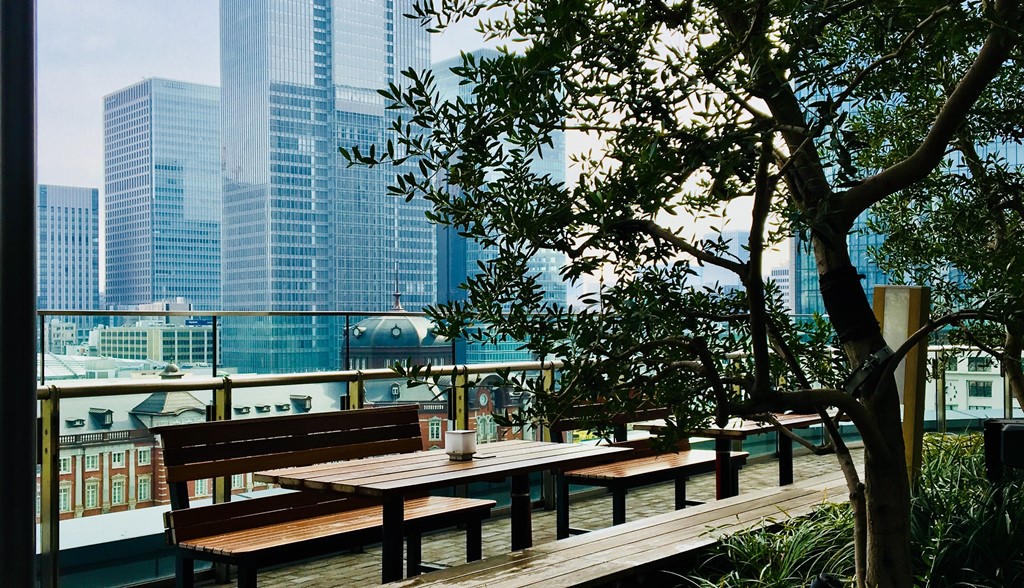Here is the entrance to the spiritual world of healing and self-development.
Niwa / 庭
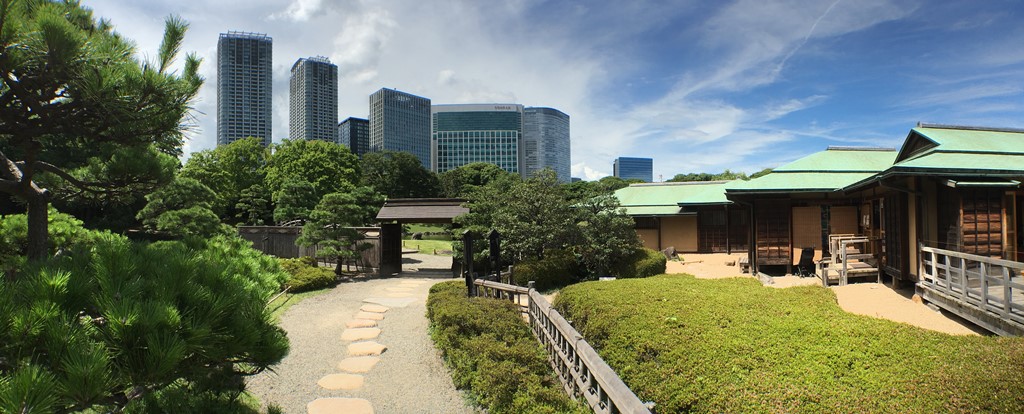

Although there are differences in interpretation among the various sects of Buddhism,
the teachings of Mahayana Buddhism state that all sentient have the essence of becoming a Buddha likes natural qualities.
This is called Buddha's nature/仏性.
The purpose of practicing Zen/禅 is to find the Buddha's nature in oneself through za-zen/座禅 and Buddha's teachings.
Zen was introduced from the continent in the 13th century and spread with Zen temples, supported by samurai.
The Rinzai sect/臨済宗, conveyed by Eizai/栄西and represented by Koan-zen/公案禅, finds its own Buddha’nature by responding to the questions given by the Zen master in addition to Zen practice.
As a means to gain the enlightenment, Dogen/道元 opened the Soto sect/曹洞宗, who values the genuine meditation of the soul.
It is called Shikan-taza/只管打坐.
仏教各宗派の間で解釈に違いはありますが、概ね大乗仏教の教えは、すべての衆生は自身の中に仏になり得る本質を持っていると述べています。
これは仏性と呼ばれ、禅を実践する目的の一つは、仏の教えを通して、仏の本性を自らの中に見つけることと言われます。
禅は13世紀に大陸から導入され、武士に支持され禅寺とともに広まりました。
栄西が伝えた公案に代表される臨済宗は、禅の修行に加えて禅師からの質問に答えることによって、自身の仏性を見出します。
道元は悟りを得るための手段として、時間と空間を超越した座禅による真の瞑想を重要視した曹洞宗を開きました。これを只管打坐と呼びます。
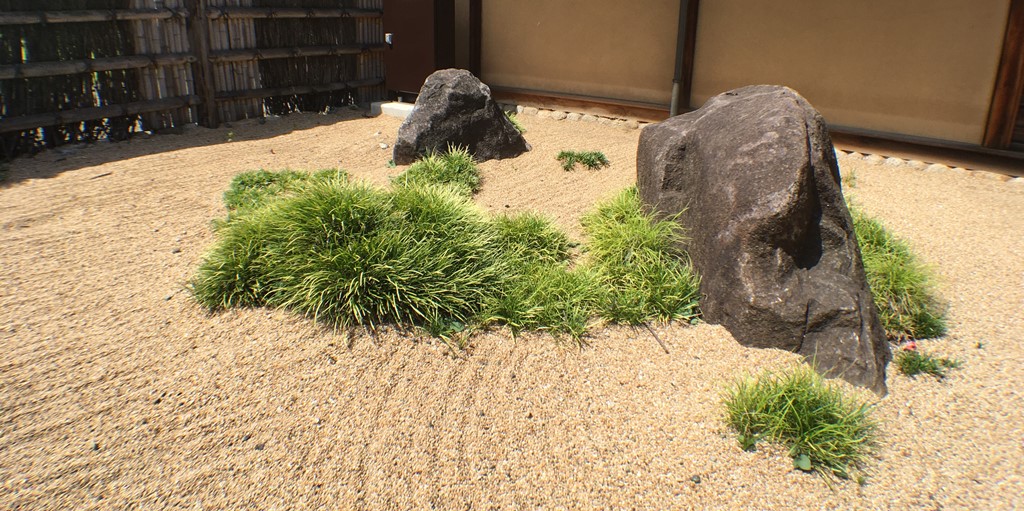
From this time, Kare-sansui/枯山水 is one of garden styles that combine a traditional Japanese garden with Zen.
Its features are simple and abstract, and natural landscapes such as mountains and rivers are expressed with inorganic materials such as sand and stone.
この頃から、禅寺の枯山水は伝統的な日本庭園と禅を組み合わせた庭園スタイルの一つになりました。
その特徴はシンプルで抽象的なものであり、山や川などの自然景観は砂や石などの無機物で表現されています。
Depuis cette époque, 枯 山水 fait partie des styles de jardin qui combinent un jardin japonais traditionnel avec le zen.
Ses caractéristiques sont simples et abstraites, et les paysages naturels tels que les montagnes et les rivières sont exprimés avec des matériaux inorganiques tels que le sable et la pierre.

On the other hand,
the Daimyo Garden/大名庭園 which was developed from the Jodo-stlye garden/浄土式庭園 inherited from the Heian period,
about 12 centuries ago, to a more rich in luxuries and varied one during the Edo period, mainly by daimyo/大名.
And it was designed to keep visitors from getting bored.
一方、約12世紀前半の平安時代から受け継がれた浄土式庭園から発展した大名庭園は、江戸時代に主に大名を中心に、豊かさを増し栄華を極めました。
また、訪問者が退屈しないように変化に富んだ設計がされていました。
D'autre part, 大名庭園 qui a été développé à partir du jardin Jodo-stlye hérité de la période Heian,
il y a environ 12 siècles, à un jardin plus riche en luxe et varié pendant la période Edo, principalement chez 大名.
Et il a été conçu pour empêcher les visiteurs de s'ennuyer.

The Jodo-style garden is one of the Japanese garden styles built from the Heian period to the Kamakura period, about 9th to 12th century.
This type is greatly influenced by the Blissful Pure Land philosophy,
and the garden pond spreads out in front of the temple building in an attempt to reproduce the Blissful Pure Land/極楽浄土 in this world.
The splendid pagoda reflected on the pond probably reminded us of the Blissful Pure Land.
浄土式庭園は、平安時代から鎌倉時代までの約9〜12世紀にデザインされた日本庭園の一つです。
このタイプは、浄土信仰の影響を強く受けており、この世の極楽浄土を再現するため、寺院の建物の前に池が広がっています。
池に映る見事な塔とその景観は極楽浄土を思い起こさせます。
Le jardin de style Jodo est l'un des styles de jardin japonais construits de la période Heian à la période Kamakura, environ du 9ème au 12ème siècle.
Ce type est grandement influencé par la philosophie Blissful Pure Land,
et l'étang de jardin s'étend devant le bâtiment du temple dans une tentative de reproduire le Blissful Pure Land dans ce monde.
La splendide pagode réfléchie sur l'étang nous a probablement rappelé la Terre Pure Béat.
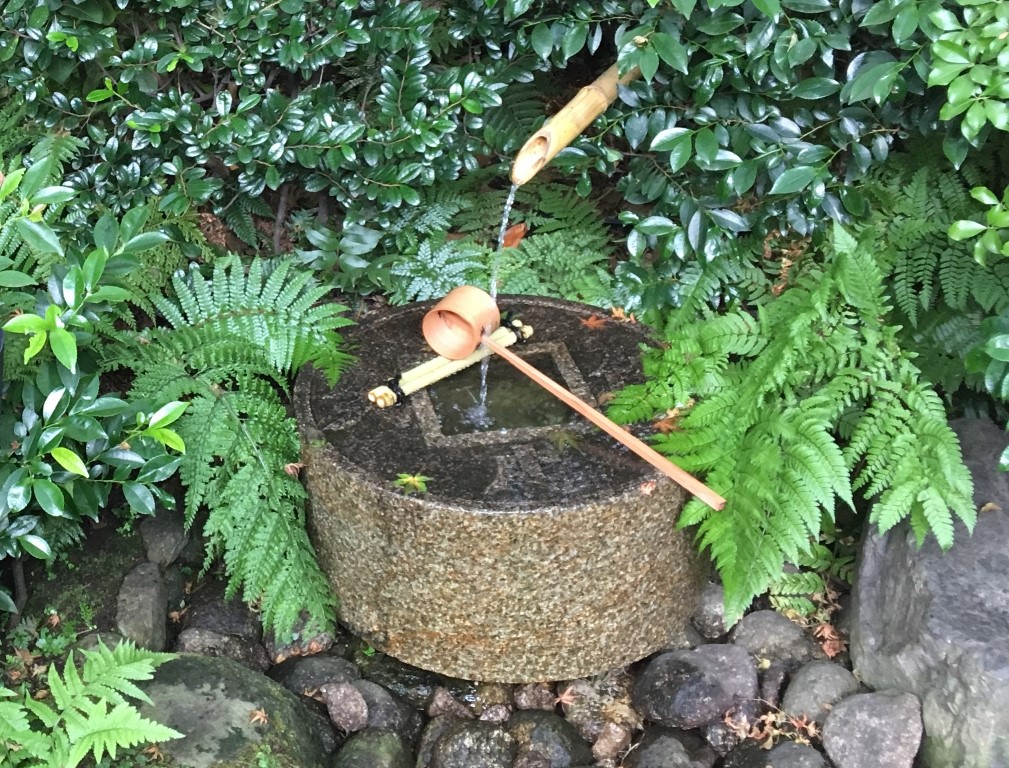 As the relationship between Zen priests and samurai became deeper,
tea ceremonies were often held, and their manners and teachings were systematized and deeply influenced other fields,
forming one of the origins of Japanese thinking.
As the relationship between Zen priests and samurai became deeper,
tea ceremonies were often held, and their manners and teachings were systematized and deeply influenced other fields,
forming one of the origins of Japanese thinking.
Sen-no-rikyu/千利休 is known as the famous historical figure of Wab-icha/侘茶, which emphasizes the spirit of "Wabi/侘", the ultimate in simplicity.
He was also the adviser of Hideyoshi TOYOTOMI/豊臣秀吉.
Sen-no-rikyu's words, Rikyu-shitisoku/利休七則, tell the basics of the tea ceremony to future generations, but also teach us the essence of modern Japanese hospitality/Omotenashi.
禅僧と武士の関係が深まるにつれ茶会が催されることも多く、その礼儀や教えは体系化され、他の分野にも深く影響し日本人の思考原点の一つとなりました。
千利休は、究極のシンプルさである「祓」の精神を強調した侘茶を体系化した茶人の一人で、将軍 豊臣秀吉の顧問も務めました。
千利休の言葉「利休七則」は、茶道の基本を後世に伝えるとともに、現代の日本のおもてなしの本質を伝えるものの一つです。
Au fur et à mesure que la relation entre les prêtres zen et les samouraïs s'approfondissait,
des cérémonies du thé étaient souvent organisées,
et leurs manières et leurs enseignements étaient systématisés et profondément influencés d'autres domaines,
formant l'une des origines de la pensée japonaise.
Sen-no-rikyu/千利休 est connu comme la célèbre figure historique de Wab-icha/侘茶,
qui met l'accent sur l'esprit de «Wabi/侘», le summum de la simplicité. Il était également le conseiller de Hideyoshi TOYOTOMI/豊臣秀吉.
Les mots de Sen-no-rikyu, 利休七則, racontent les bases de la cérémonie du thé aux générations futures, mais nous enseignent également l'essence de l'hospitalité japonaise moderne, Omotenashi.
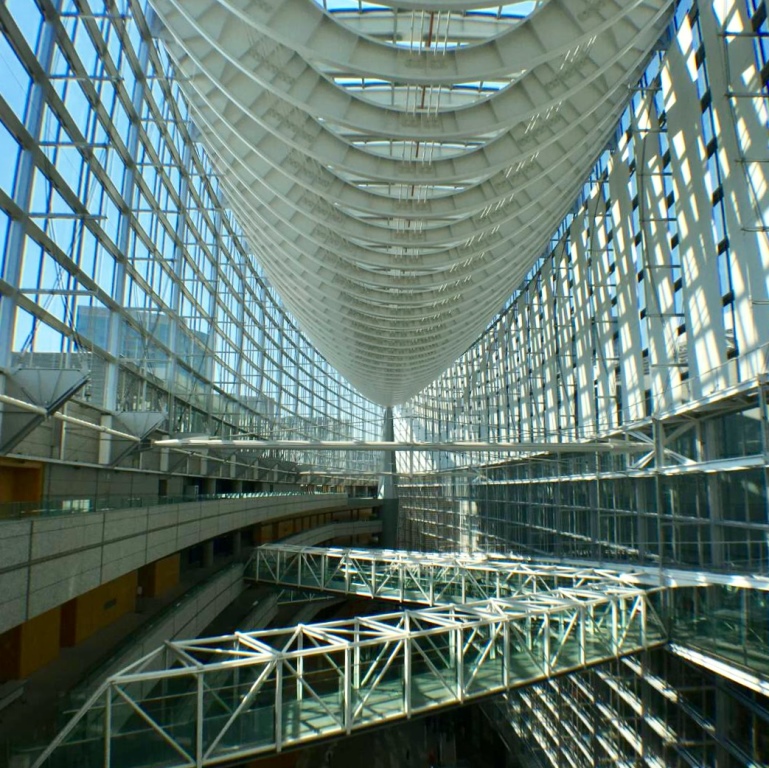
Due to this historical background, it is often found mainly in the Kansai area, but in the Kanto area it is found around Kamakura.
In Tokyo, there are many strolling daimyo gardens such as Hamarikyu.
Especially, in the middle of Tokyo, where high-rise buildings are crowded, there are gardens that represent modern Japan.
Gardens of various sizes, such as the rooftops and terraces of commercial buildings that have been greened, and the roofs of government facilities that have been turned into park, have been efficiently created in limited spaces by Japanese people who want to feel the breath of nature.
This is the garden floating in the air of Tokyo, Kuchu Teien Observatory.
この歴史背景から、主に関西地区や関東では鎌倉で枯山水は多く見られ、東京では、浜離宮に代表される回遊式大名庭園が多く見られます。
また、近年の傾向ですが、特に高層建築物が乱立する東京都心部では、現代日本を代表する庭園があります。
商業ビルの屋上やテラスを緑地化したものや、政府施設の屋根を公園にしたものなど大小様々な庭園が、
自然の息吹を身近に感じたい日本人によって限られた空間にも効率良く作り上げられています。
これを、現代の空中庭園と呼ぶのかもしれません。
En raison de ce contexte historique, on le trouve souvent principalement dans la région du Kansai, mais dans la région du Kanto, il se trouve autour de Kamakura. À Tokyo, il existe de nombreux jardins de daimyo qui se promènent comme Hamarikyu.
Surtout, au milieu de Tokyo, où les immeubles de grande hauteur sont bondés, il y a des jardins qui représentent le Japon moderne.
Des jardins de différentes tailles, tels que les toits et les terrasses des bâtiments commerciaux qui ont été verdoyés, et les toits des installations gouvernementales qui ont été transformées en parc, ont été efficacement créés dans des espaces limités par des Japonais qui veulent sentir le souffle de la nature .
C'est le jardin flottant dans les airs de Tokyo, l'Observatoire Kuchu Teien.
